EPA finalizes toughest-ever emissions standards for model years 2027-2032
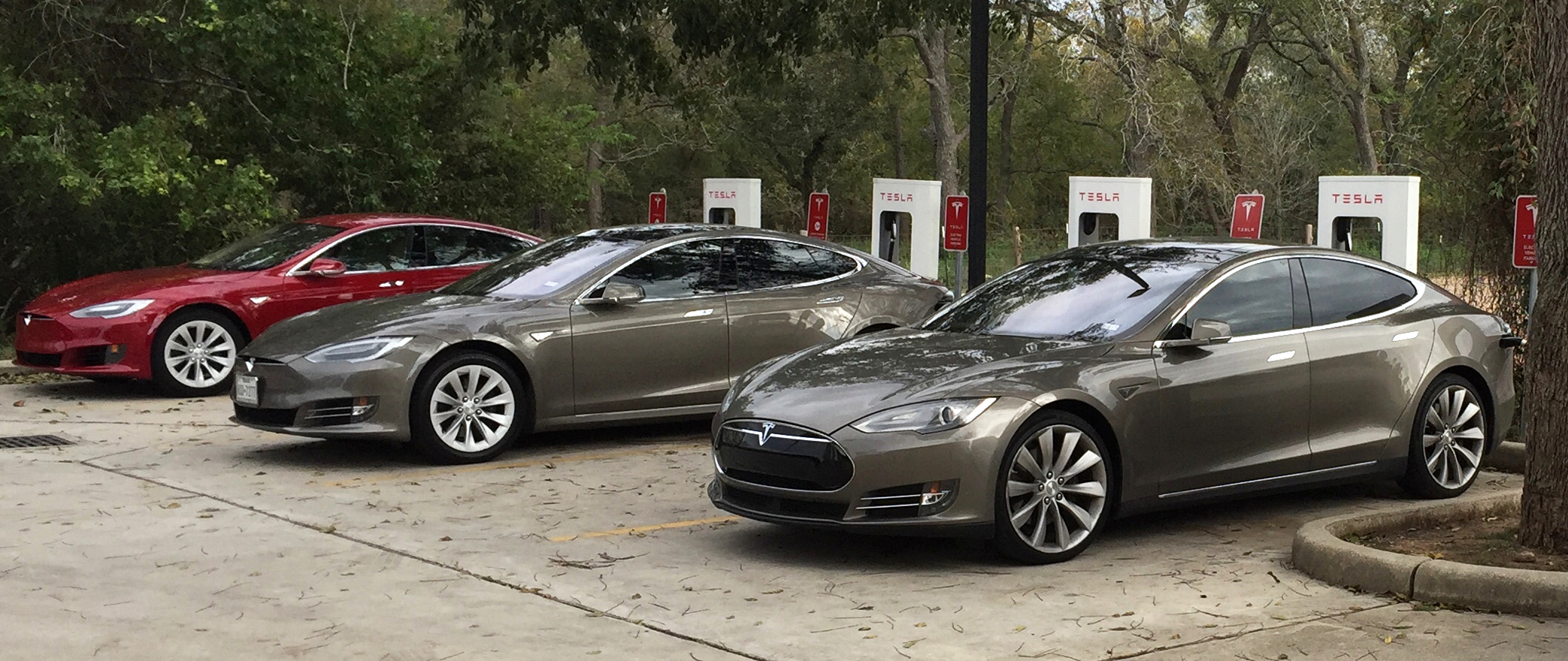
Three Tesla Model S electric cars charging at a supercharger station in Columbus, Texas. WIKIMEDIA COMMONS/Ed Uthman
April 14 (ZFJ) — The Environmental Protection Agency (EPA) finalized the toughest emissions standards yet for light and medium-duty vehicles of model years (MY) 2027-2032, announced the agency on March 20.
The agency projects that the updated standards in Multi Pollutant Emissions Standards for Model Years 2027 and Later Light-Duty and Medium-Duty Vehicles will avoid 7.2 billion tons of carbon emissions between 2027-2055 and provide almost $100 billion of net benefits to society, including improved air quality and reduced annual fuel and maintenance costs for drivers.
Light-duty vehicle (LDV) standards apply to passenger cars, light trucks, and heavier vehicles primarily for transporting people. Medium-duty vehicles (MDV) standards apply to heavy-duty vehicles with a gross vehicle weight rating of between 8,501-14,000 pounds, such as large pickups and vans typically used for work.
The EPA expects that the MY 2032 LDV standards will result in an industry-wide average target of 85 grams per mile of carbon dioxide (CO2)—a 50% reduction in projected fleet average emissions target levels relative to MY 2026 standards.
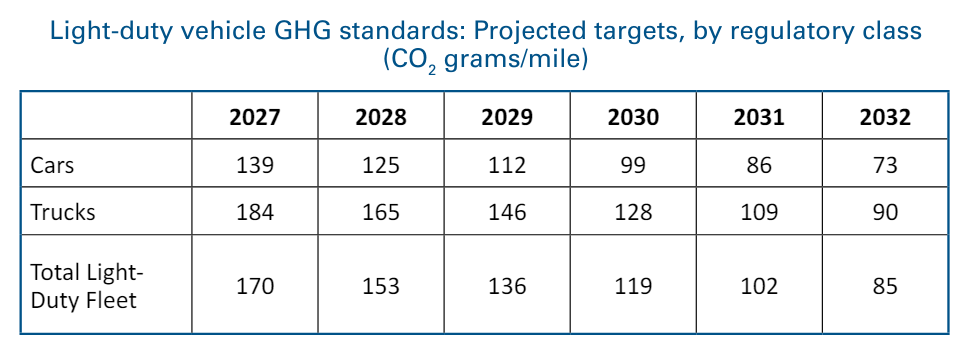 A table of greenhouse gas emissions standards for light-duty vehicles by regulatory class up to MY 2032. EPA/Handout
A table of greenhouse gas emissions standards for light-duty vehicles by regulatory class up to MY 2032. EPA/Handout
MDV standards will phase over six years from MY 2027 to MY 2032. When fully phased in, the EPA projects that the industry-wide average target will be 274 g/mi of CO2 for MDVs—a 44% reduction compared to MY 2026 standards.
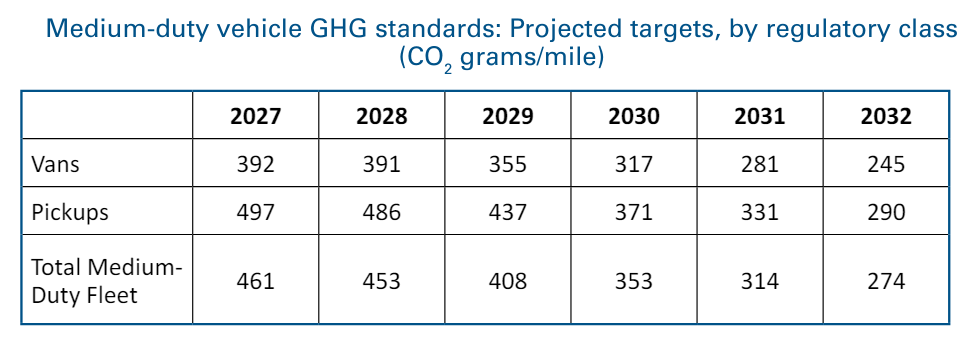 A table of greenhouse gas emissions standards for medium-duty vehicles by regulatory class up to MY 2032. EPA/Handout
A table of greenhouse gas emissions standards for medium-duty vehicles by regulatory class up to MY 2032. EPA/Handout
The standards also include new restrictions on harmful air pollutants that contribute to the formation of soot (PM) and smog (ozone).
Emissions standards for non-methane organic gases and nitrogen oxides (NMOG+NOx) for LDVs will be reduced from 30 milligrams per mile (MY 2025) to 15 mg/mi by MY 2032 (a 50% reduction).
NMOG+NOx emissions limits for MDVs will be reduced to a fleet average of 75 mg/mi by MY 2033, down from 178 mg/mi for Class 2b vehicles and 247 mg/mi for Class 3 vehicles (58-70% reduction).
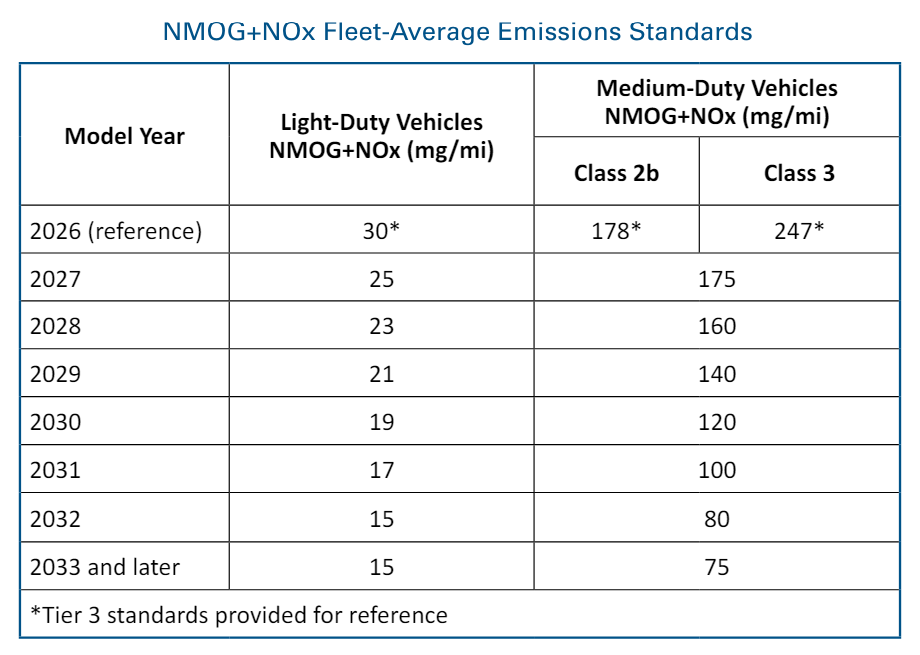 A table of non-methane organic gases and nitrogen oxides emissions fleet average standards up to MY 2033 and later. EPA/Report
A table of non-methane organic gases and nitrogen oxides emissions fleet average standards up to MY 2033 and later. EPA/Report
For LDVs and MDVs, the EPA is imposing a 0.5 mg/mi cap per vehicle on particulate matter (PM2.5). It will be phased in by MY 2030 for LDVs and MY 2031 for MDVs. The EPA projects that this standard will reduce tailpipe PM2.5 emissions by over 95%.
The EPA has set up phase-in schedules for its new pollutant standards, which are expected to avoid 8,700 tons of PM2.5, 36,000 tons of NOx, and 150,000 tons of hydrocarbons by 2055 (compared to 2055 levels without the standards).
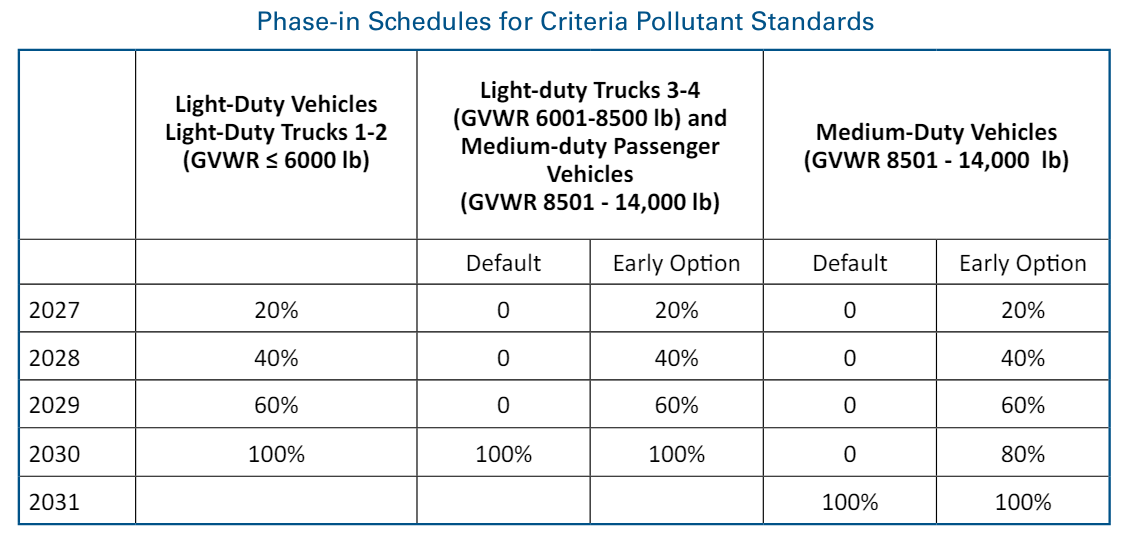 A table of the phase-in schedule for the new pollutant standards. EPA/Report
A table of the phase-in schedule for the new pollutant standards. EPA/Report
The EPA expects that these new standards will accelerate the development of clean vehicles, including hybrid and plug-in electric vehicles as well as cleaner gas vehicles. It projects that, from MY 2030-2032, 30-56% of new LDV sales and 20-32% of new MDV sales will be battery electric vehicles.
According to the EPA, the transportation sector is the largest American source of greenhouse gases at 29% of total emissions.
References
- U.S. Environmental Protection Agency - Biden-Harris Administration finalizes strongest-ever pollution standards for cars that position U.S. companies and workers to lead the clean vehicle future, protect public health, address the climate crisis, save drivers money - https://www.epa.gov/newsreleases/biden-harris-administration-finalizes-strongest-ever-pollution-standards-cars-position (ARCHIVE)
- U.S. Environmental Protection Agency - Multi-Pollutant Emissions Standards for Model Years 2027 and Later LightDuty and Medium-Duty Vehicles: Final Rule - https://www.epa.gov/system/files/documents/2024-03/420f24016.pdf (ARCHIVE)
